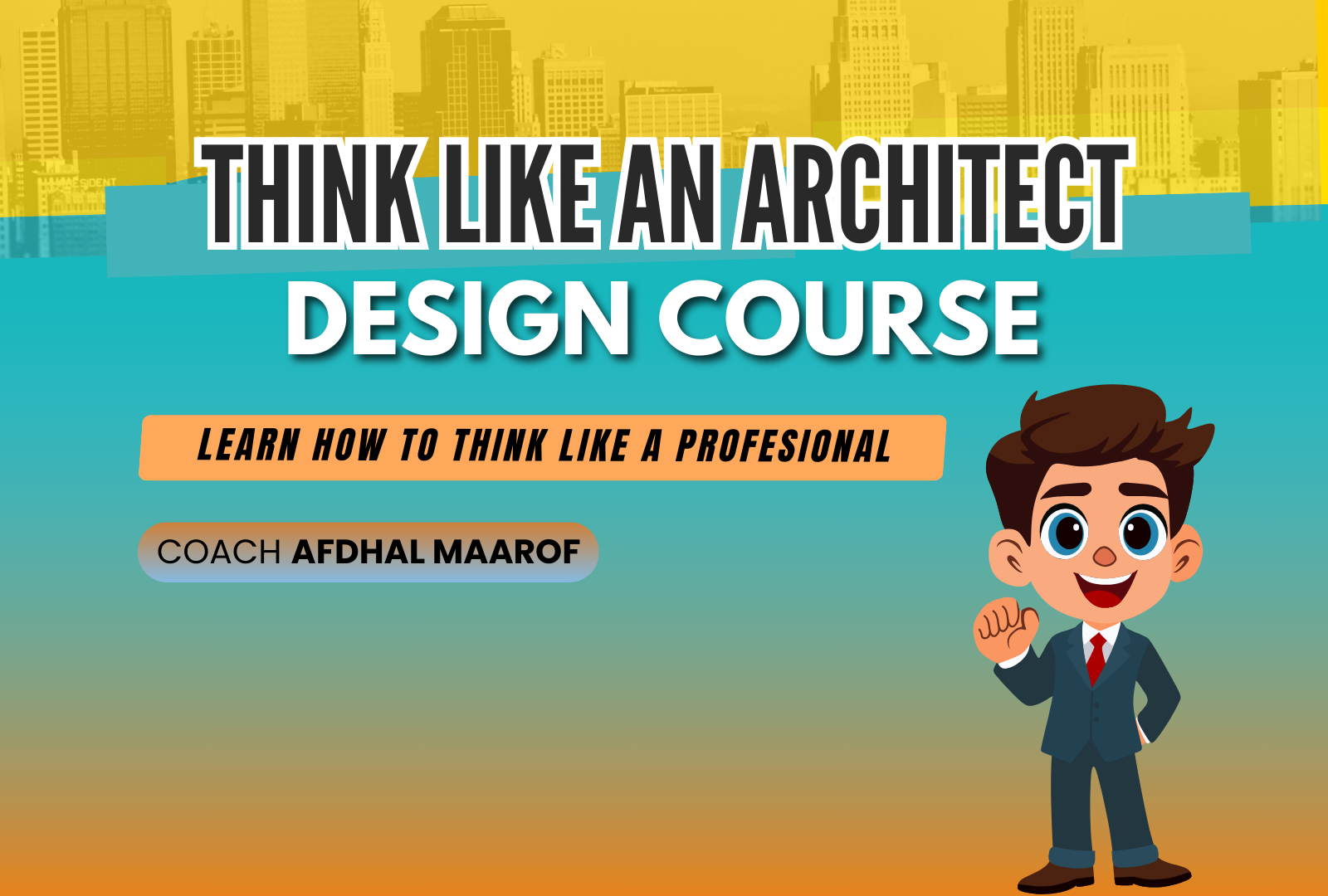Think Like an Architect: The Essential Design Process
in Artificial IntelligenceAbout this course
Think Like an Architect: The Essential Design Process
Master the Fundamentals of Architectural Design & Create Stunning Spaces
Are You Ready to Unlock Your Architectural Potential?
Do you dream of designing innovative and functional buildings but don’t know where to start?
This course will guide you through the fundamentals of architectural design, helping you develop the skills, mindset, and knowledge to think and work like a professional architect.
What You’ll Learn:
✅ Architectural Thinking: How architects approach design challenges
✅ The Design Process: From concept to execution
✅ Site Analysis & Context: Understanding how location influences design
✅ Client Needs & Problem-Solving: Translating ideas into real-world solutions
✅ Case Studies of Great Architecture: Learning from iconic projects
Who Is This Course For?
✔️ Aspiring architects and design students
✔️ Creative professionals looking to explore architecture
✔️ Interior designers, urban planners, and engineers
✔️ Anyone passionate about the art & science of building design
Course Features:
📚 Comprehensive Notes – Easy-to-follow lessons with real-world insights
📝 Interactive Quizzes – Test your knowledge and reinforce learning
🎯 Step-by-Step Learning – Master the essential skills at your own pace
🎓 Certificate of Completion – Boost your portfolio & career prospects
Why Learn With Us?
🚀 Industry-Relevant Knowledge: Learn practical skills used by architects worldwide
📖 Structured Curriculum: A clear, guided approach to mastering architectural design
🌍 Flexible & Self-Paced: Study anytime, anywhere, at your own speed
Join Today & Start Designing Like a Pro!
📌 Limited-Time Offer – Enroll Now & Get Instant Access!
Comments (0)
Lesson 1: The Role of an Architect in Shaping Spaces
An architect designs spaces that are functional, aesthetically pleasing, and sustainable. They combine art and engineering to create structures that serve human needs.
Key Responsibilities of an Architect:
Conceptualization – Developing creative ideas for buildings.
Design & Planning – Creating detailed plans and blueprints.
Sustainability Considerations – Ensuring environmentally friendly designs.
Client Collaboration – Understanding and implementing client needs.
Construction Oversight – Supervising the execution of designs.
Lesson 2: Thinking Spatially and Critically
Architectural thinking requires:
Spatial Awareness – Understanding how people interact with spaces.
Critical Thinking – Solving design problems effectively.
Key Principles of Architectural Thinking:
✅ Functionality: Every space should serve a purpose.
✅ Aesthetics: A balance of beauty and usability.
✅ Innovation: Creative solutions for design challenges.
✅ Human Experience: Designing with the end user in mind.
Lesson 3: Balancing Function, Form, and Aesthetics
The architectural design process balances three key elements:
Function: Ensuring the building meets its intended use.
Form: The shape and structure of the building.
Aesthetics: The visual appeal of the space.
Architects achieve this balance through proportion, symmetry, material selection, and lighting.
Quiz: Introduction to Architectural Thinking
1. What is the primary role of an architect?
A) Construct buildings
B) Develop creative and functional designs ✅
C) Approve construction materials
D) Work only on aesthetic elements
2. Which of the following is NOT a key principle of architectural thinking?
A) Functionality
B) Aesthetics
C) Random Design ✅
D) Human Experience
3. What does 'spatial awareness' refer to in architecture?
A) Understanding how space interacts with people ✅
B) Selecting materials for construction
C) Measuring the weight of a structure
D) Budgeting for a project
4. What are the three key aspects architects must balance?
A) Speed, Cost, Aesthetics
B) Size, Height, Color
C) Function, Form, Aesthetics ✅
D) Structure, Materials, Lighting
5. Which of the following is an important responsibility of an architect?
A) Choosing interior decorations
B) Designing based on sustainability principles ✅
C) Managing office supplies
D) Selling construction materials








